The Barnes Collection
Ongoing
See art differently.

Vincent van Gogh. The Factory (detail), 1887. The Barnes Foundation, BF303. Public Domain.
Adults $30; seniors $28 (tickets good for 2 days); students $5; members free
About the Collection
The Barnes is home to one of the world’s greatest collections of impressionist, post-impressionist, and early modern paintings, with especially deep holdings in Renoir, Cézanne, Matisse, and Picasso. Assembled by Dr. Albert C. Barnes between 1912 and 1951, the collection also includes important examples of African art, Native American pottery and jewelry, Pennsylvania German furniture, American avant-garde painting, and wrought-iron metalwork.
The minute you step into the galleries of the Barnes collection, you know you’re in for an experience like no other. Masterpieces by Vincent van Gogh, Henri Matisse, and Pablo Picasso hang next to ordinary household objects—a door hinge, a spatula, a yarn spinner. On another wall, you might see a French medieval sculpture displayed with a Navajo textile. These dense groupings, in which objects from different cultures, time periods, and media are all mixed together, are what Dr. Barnes called his “ensembles.”
The ensembles, each one meticulously crafted by Dr. Barnes himself, are meant to draw out visual similarities between objects we don’t normally think of together. Created as teaching tools, they were essential to the educational program Dr. Barnes developed in the 1920s.
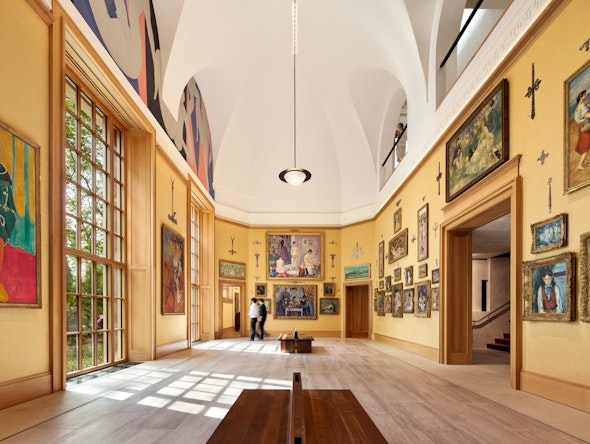
The main gallery upon entering the Barnes collection.
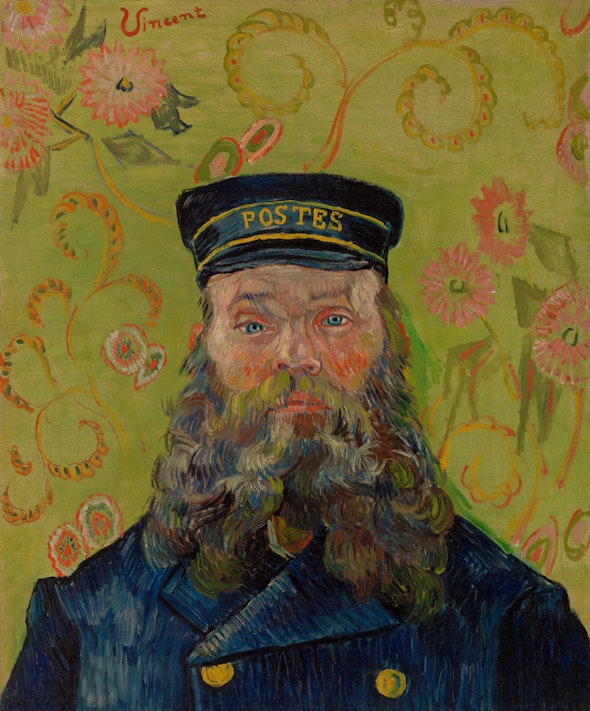
One of the first paintings purchased by Dr. Barnes.
Vincent van Gogh. The Postman (Joseph-Étienne Roulin), 1889. BF37. Public Domain.
Dr. Barnes began collecting in 1912. After making a fortune in the pharmaceutical business, he turned his attention to building “the greatest modern art collection” of his time. In February of that year, he sent his friend, the artist William Glackens, to Paris with instructions to bring back paintings by the French avant-garde. Glackens returned with 33 works, including Van Gogh’s The Postman (1889) and Picasso’s Young Woman Holding a Cigarette (1901).
Dr. Barnes quickly established himself as a bold and ambitious collector, traveling frequently to New York and Paris, buying from dealers and sometimes directly from artists. Over the course of four decades, he assembled what is now considered one of the world's greatest collections of impressionist, post-impressionist, and early modern European paintings, with works by Paul Cézanne, Henri Matisse, Pablo Picasso, Amedeo Modigliani, Pierre-Auguste Renoir, and Chaïm Soutine.
Great Paintings at the Barnes
The Barnes collection has the world's largest holdings of paintings by Renoir (179) and Cézanne (69), as well as significant works by Matisse, Picasso, Modigliani, Van Gogh, and other renowned artists.
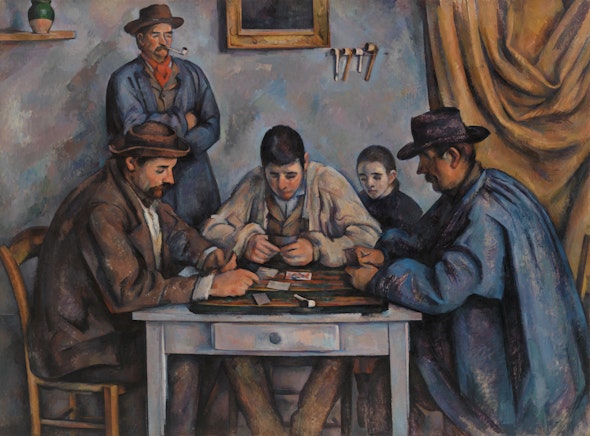
Paul Cézanne. The Card Players (Les Joueurs de cartes), 1890–92. BF564. Public Domain.
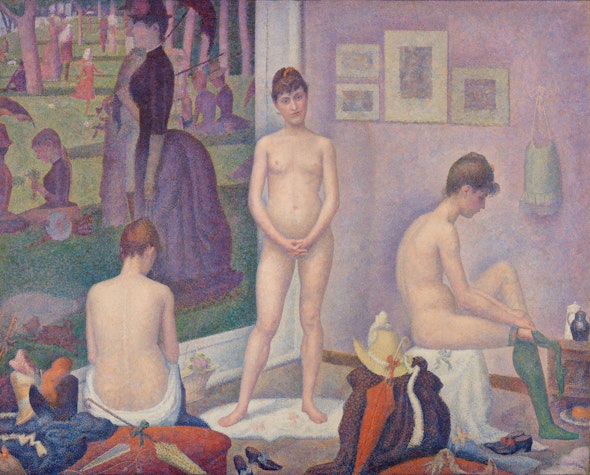
Georges Seurat. Models (Poseuses), 1886–88. BF811. Public Domain.
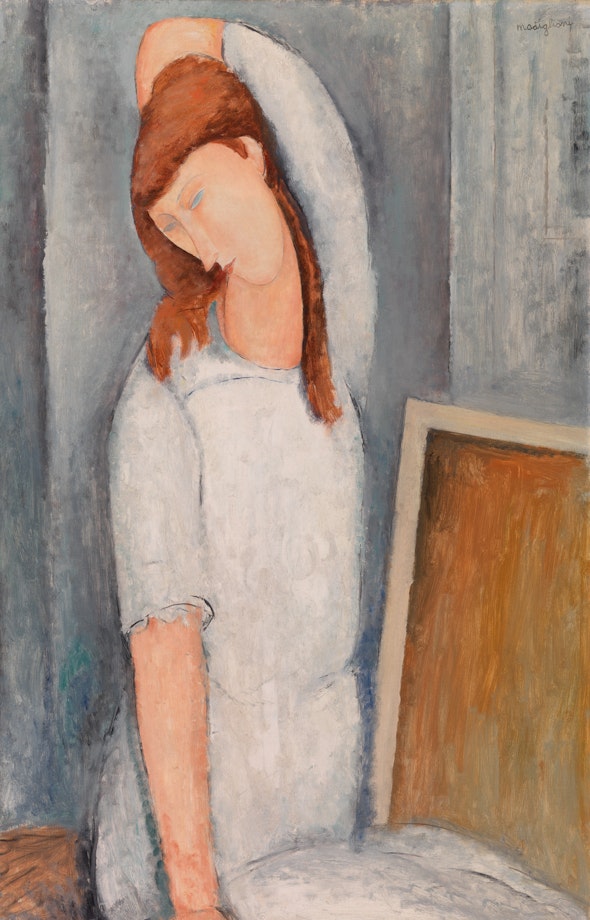
Amedeo Modigliani. Jeanne Hébuterne, 1919. BF285. Public Domain.
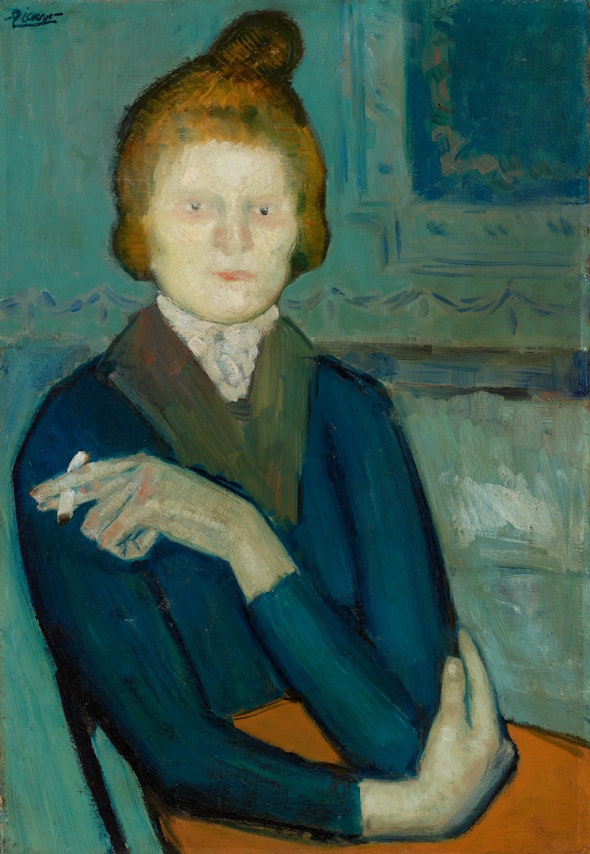
Pablo Picasso. Young Woman Holding a Cigarette (Jeune femme tenant une cigarette), 1901. BF318. © 2025 Estate of Pablo Picasso / Artists Rights Society (ARS), New York
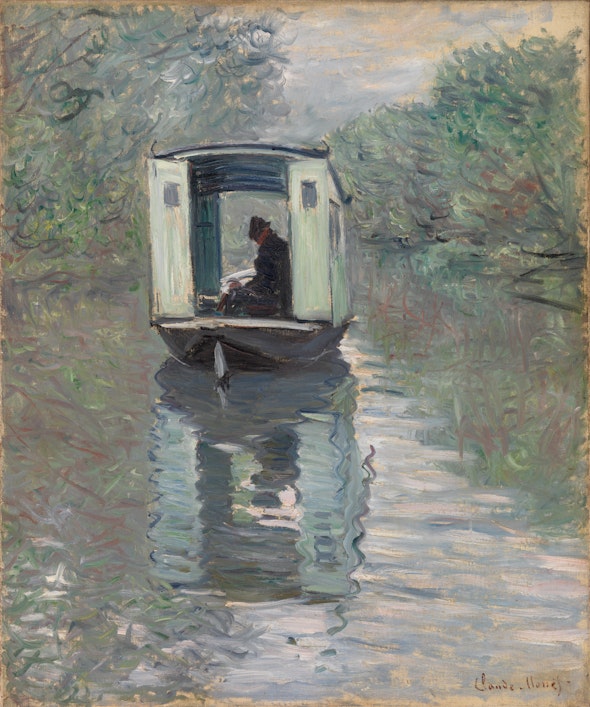
Claude Monet. The Studio Boat (Le Bateau-atelier), 1876. BF730. © 2025 Estate of Claude Monet
In 1922, Dr. Barnes chartered his namesake foundation as an educational institution for teaching people how to look at art. He was inspired by the writings of philosopher John Dewey, who emphasized the importance of education in a truly democratic society, and he decided to devote his whole collection to the project. He commissioned architect Paul Cret to design a gallery (the original building is still in Merion); he hired a teaching staff, including the legendary Violette de Mazia; and the Barnes opened for classes in 1925.
Meanwhile, Dr. Barnes continued to build his collection. Though still focused on European modernism, his interests extended into other areas as well. In the early 1920s, he added a stunning group of African masks and sculptures to his collection—there are over 100—which he acquired from the French art dealer Paul Guillaume. He also began to purchase Native American pottery, jewelry, and textiles; old master paintings; ancient Egyptian, Greek, and Roman art; and American and European decorative and industrial arts, including 887 wrought-iron objects.
Dr. Barnes continued collecting until his death in 1951. The wall ensembles are still arranged exactly as he left them.
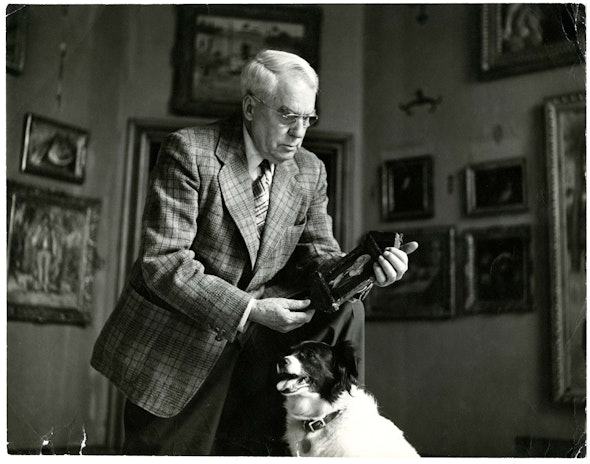
Dr. Barnes, in his Merion gallery.
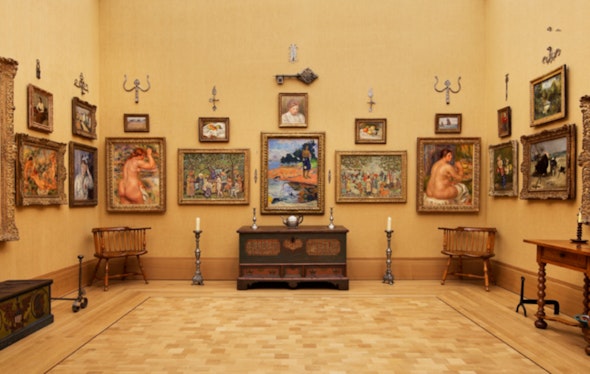
The ensembles created by Dr. Barnes combine art and craft, cosmopolitan and provincial styles, and objects from across periods and cultures.
Learn More about the Collection
Barnes Focus, Our Mobile Gallery Guide Enhance your experience on-site with our smartphone guide, which offers information and stories about the art and objects in the collection.
Barnes Collection Online The design of our collection online was inspired by Dr. Barnes and his approach to looking at art. You can browse 3,000-plus objects by color, light, line, and space, making unexpected and exciting connections between pieces from different eras, places, and cultures.
Library, Archives, and Special Collections Want to learn more about Dr. Barnes and his collection? Our archives, art library, and manuscript and rare book collections are rich research resources. Go deeper into Barnes history through our digital archives exhibitions.
Conservation Our Conservation team has the difficult but rewarding task of caring for the art collection.
Outgoing Loans The Barnes considers loan requests on a limited basis to temporary exhibitions that support our mission to promote the advancement of education and appreciation of the fine arts.
If you have questions about the Barnes collection, please email us.